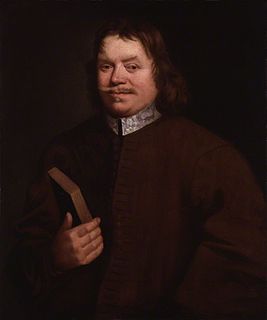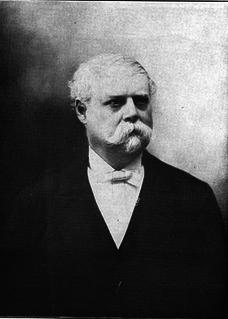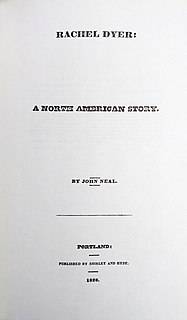Related Research Articles

Raymond Thornton Chandler was an American-British novelist and screenwriter. In 1932, at the age of forty-four, Chandler became a detective fiction writer after losing his job as an oil company executive during the Great Depression. His first short story, "Blackmailers Don't Shoot", was published in 1933 in Black Mask, a popular pulp magazine. His first novel, The Big Sleep, was published in 1939. In addition to his short stories, Chandler published seven novels during his lifetime. All but Playback have been made into motion pictures, some more than once. In the year before his death, he was elected president of the Mystery Writers of America.

John Bunyan was an English writer and Puritan preacher best remembered as the author of the Christian allegory The Pilgrim's Progress, which also became an influential literary model. In addition to The Pilgrim's Progress, Bunyan wrote nearly sixty titles, many of them expanded sermons.

Joel Chandler Harris was an American journalist, fiction writer, and folklorist best known for his collection of Uncle Remus stories. Born in Eatonton, Georgia, where he served as an apprentice on a plantation during his teenage years, Harris spent most of his adult life in Atlanta working as an associate editor at The Atlanta Constitution.

The picaresque novel is a genre of prose fiction. It depicts the adventures of a roguish, but "appealing hero", usually of low social class, who lives by his wits in a corrupt society. Picaresque novels typically adopt a realistic style. There are often some elements of comedy and satire. While the term "picaresque novel" was only coined in 1810, the picaresque novel originated in Spain during the Spanish Golden Age in 1554. Early contributors included Mateo Alemán and Francisco de Quevedo and flourished throughout Europe for more than 200 years. It continues to influence modern literature.

The Pilgrim's Progress from This World, to That Which Is to Come is a 1678 Christian allegory written by John Bunyan. It is regarded as one of the most significant works of theological fiction in English literature and a progenitor of the narrative aspect of Christian media. It has been translated into more than 200 languages and never been out of print. It appeared in Dutch in 1681, in German in 1703 and in Swedish in 1727. The first North American edition was issued in 1681. It has also been cited as the first novel written in English. According to literary editor Robert McCrum, "there's no book in English, apart from the Bible, to equal Bunyan's masterpiece for the range of its readership, or its influence on writers as diverse as William Thackeray, Charlotte Bronte, Nathaniel Hawthorne, Mark Twain, C. S. Lewis, John Steinbeck and even Enid Blyton." The words on which the hymn "To be a Pilgrim" is based come from the novel.

Jorge Agustín Nicolás Ruiz de Santayana y Borrás, known in English as George Santayana, was a philosopher, essayist, poet, and novelist. Born in Spain, Santayana was raised and educated in the US from the age of eight and identified himself as an American, although he always retained a valid Spanish passport. At the age of 48, Santayana left his position at Harvard and returned to Europe permanently.
This article contains information about the literary events and publications of 1678.

Invisible Man is a novel by Ralph Ellison, published by Random House in 1952. It addresses many of the social and intellectual issues faced by African Americans in the early twentieth century, including black nationalism, the relationship between black identity and Marxism, and the reformist racial policies of Booker T. Washington, as well as issues of individuality and personal identity.

Vasily Semyonovich Grossman was a Soviet writer and journalist.

Ernest William Hornung was an English author and poet known for writing the A. J. Raffles series of stories about a gentleman thief in late 19th-century London. Hornung was educated at Uppingham School; as a result of poor health he left the school in December 1883 to travel to Sydney, where he stayed for two years. He drew on his Australian experiences as a background when he began writing, initially short stories and later novels.

Something Wicked This Way Comes is a 1962 dark fantasy novel by Ray Bradbury. It is about two 13-year-old best friends, Jim Nightshade and William Halloway, and their nightmarish experience with a traveling carnival that comes to their Midwestern home, Green Town, Illinois, on October 24th. In dealing with the creepy figures of this carnival, the boys learn how to combat fear. The carnival's leader is the mysterious "Mr. Dark", who seemingly wields the power to grant the townspeople's secret desires. In reality, Dark is a malevolent being who, like the carnival, lives off the life force of those they enslave. Mr. Dark's presence is countered by that of Will's father, Charles Halloway, the janitor of the town library, who harbors his own secret fear of growing older because he feels he is too old to be Will's dad.
Samuel Rowlands was an English author of pamphlets in prose and verse which reflect the follies and humours of lower middle-class life in his day. He seems to have had no literary reputation at the time, but his work throws much light on the development of popular literature and social life in London, where he spent his life. His contact with the middle and lower classes of society included working in 1600–1615 for William White, and then George Loftus, booksellers, who published Rowlands's pamphlets in this time.
Peter Pienaar is a character from John Buchan's series of Richard Hannay books. He is described by Hannay as being "five foot ten, very thin and active, and as strong as a buffalo [with] pale blue eyes, a face as gentle as a girl's, and a soft sleepy voice."
John Brown (1830–1922) was a British theologian, historian, and pastor.
Hödekin is a kobold of German folklore. According to the legend recorded by folklorist Thomas Keightley in 1850, Hödekin always wore a felt hat down over his face; his name means "Little Hat". Hödekin lived with the Bishop of Hildesheim and was a helpful sprite.

Jack Sheppard is a novel by William Harrison Ainsworth serially published in Bentley's Miscellany from 1839 to 1840, with illustrations by George Cruikshank. It is a historical romance and a Newgate novel based on the real life of the 18th-century criminal Jack Sheppard.
Badman or Bad Man may refer to:

Charles Felton Pidgin was an American author, statistician, and inventor. He is best known for his 1900 novel Quincy Adams Sawyer, which became successful largely due to a big marketing campaign, and was adapted for the stage and silent film.
This is a complete bibliography for American children's writer L. Frank Baum.

Rachel Dyer: A North American Story is a Gothic historical novel by American writer John Neal. Published in 1828 in Maine, it is the first bound novel about the Salem witch trials. Though it garnered little critical notice in its day, it influenced works by Nathaniel Hawthorne, Henry Wadsworth Longfellow, John Greenleaf Whittier, and Walt Whitman. It is best remembered for the American literary nationalist essay, "Unpublished Preface", that precedes the body of the novel.
References
- ↑ Dunan, A. (2000). The Life and Death of Mr. Badman as a 'Compassionate Counsel to all Young Men': John Bunyan and Nonconformist Writings on Youth. Bunyan Studies vol. 9, 50-68.
- ↑ Chandler, Frank Wadleigh (1907). The literature of roguery, Volume 2, p, 225-226. Houghton, Mifflin and Company
- ↑ Wharey, James Blanton (March 15, 1924 ). Bunyan's Mr. Badman and the picaresque novel. Studies in English, No. 4, pp. 49-61.